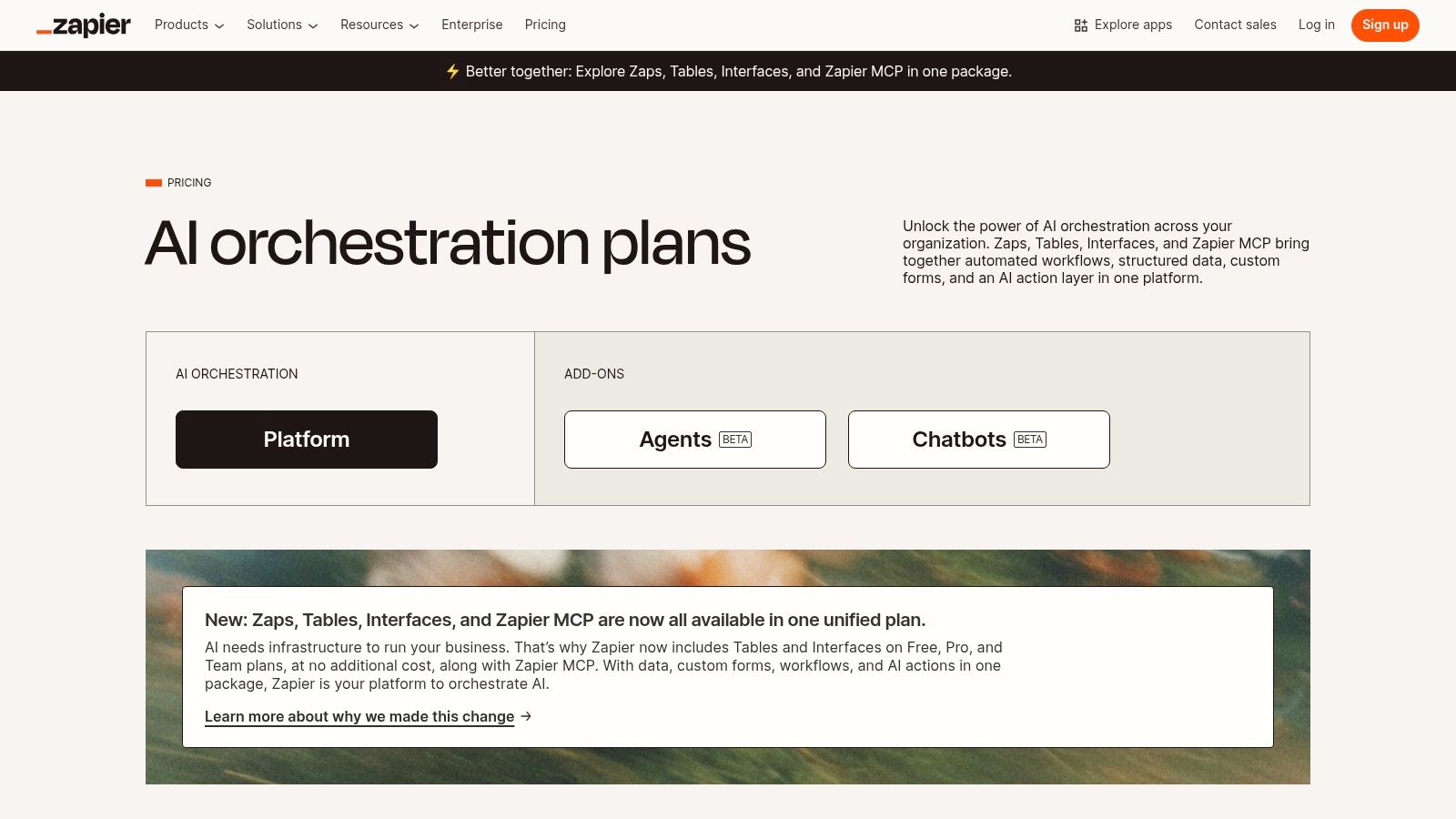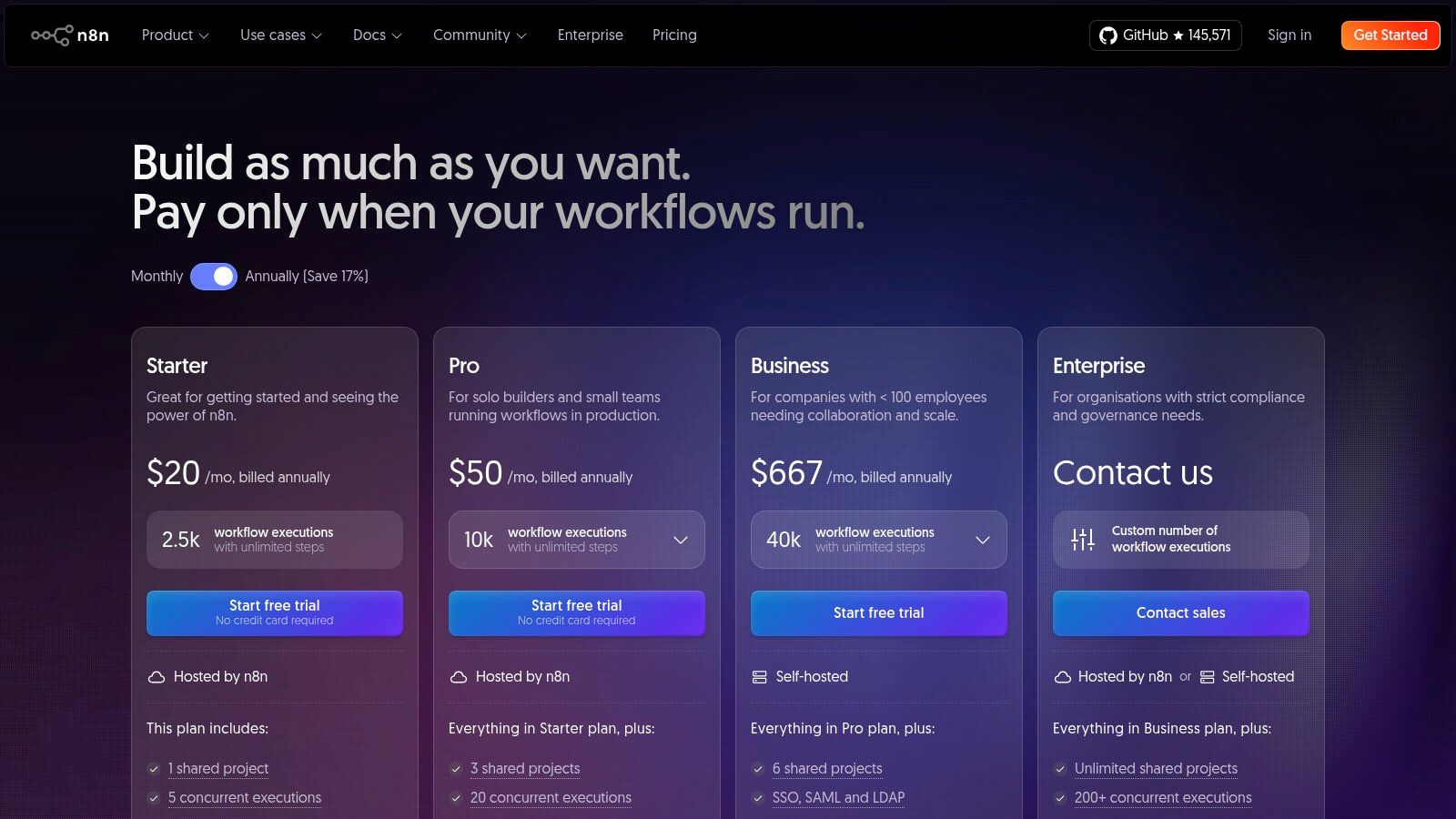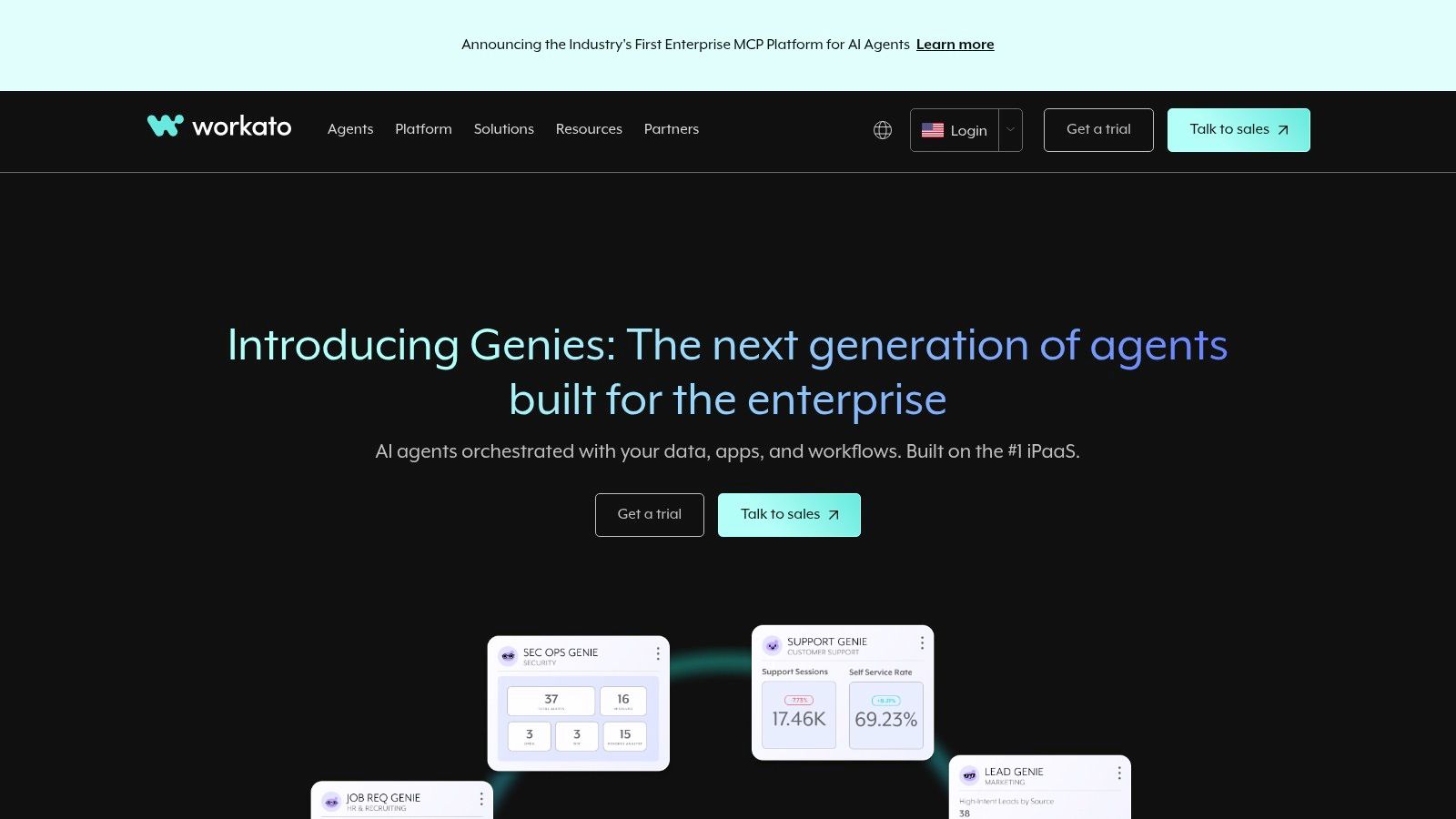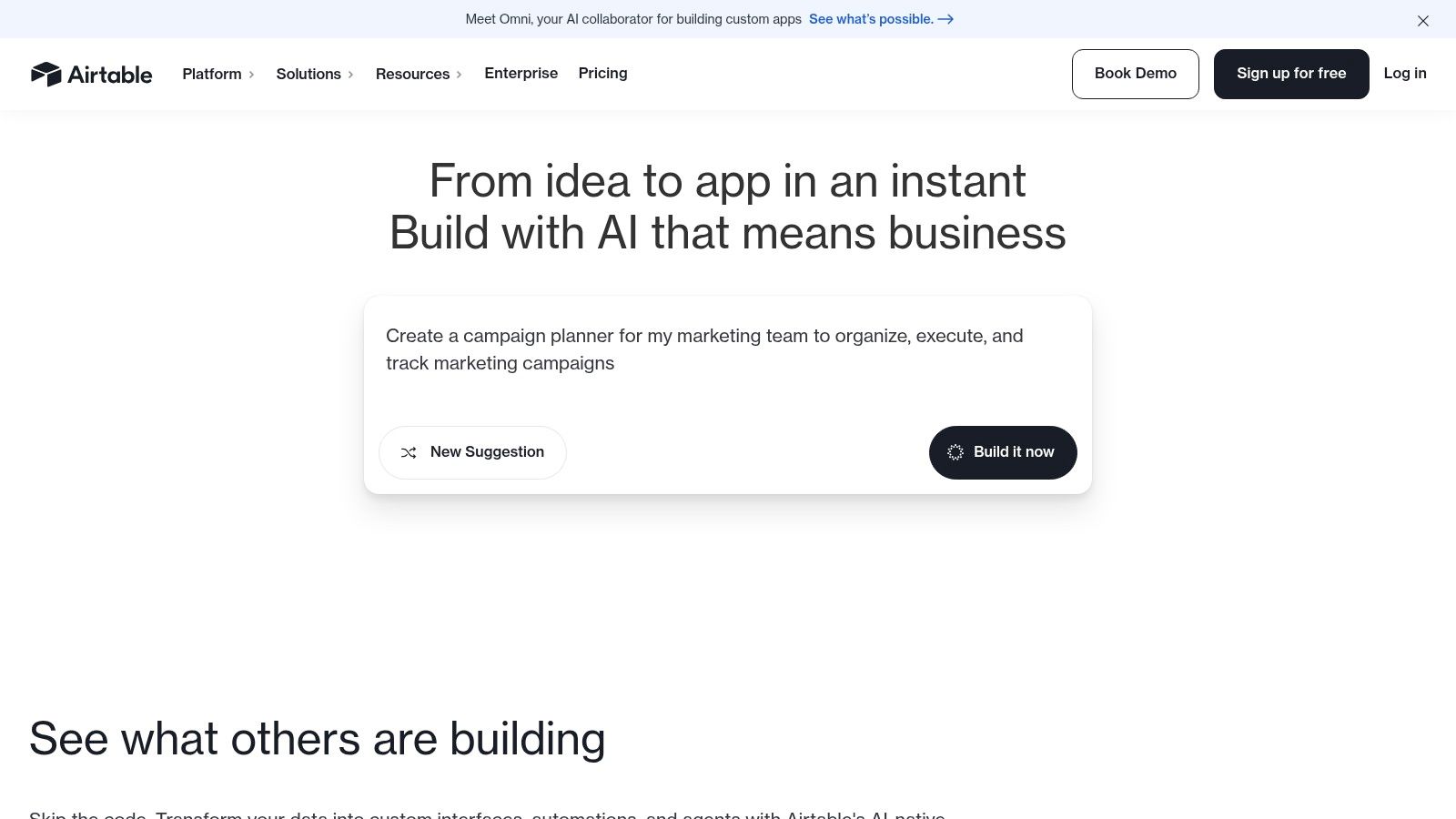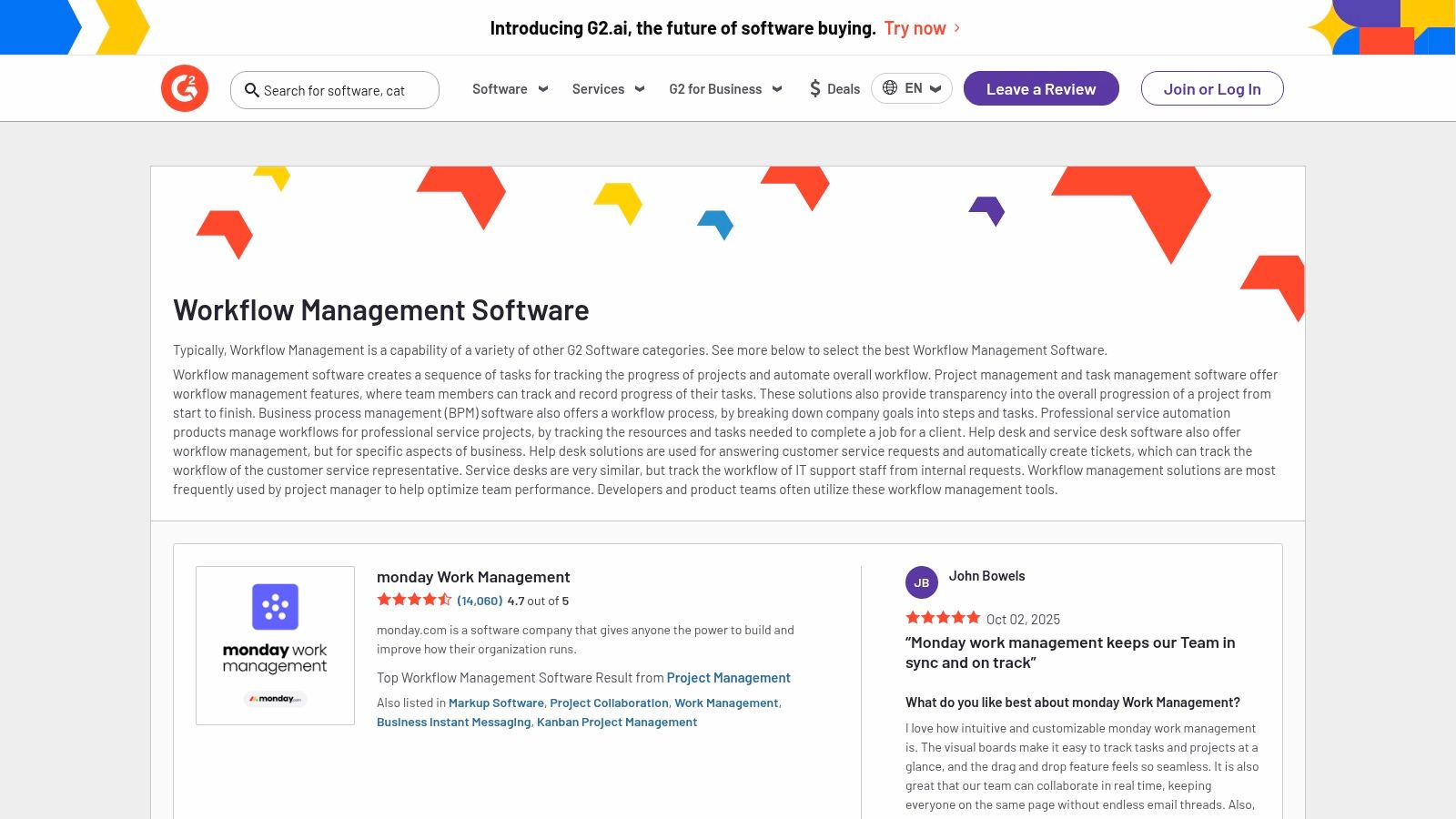- Oct 7
- 16 min read
Ever had that sinking feeling when you promise a customer an item is in stock, only to discover an empty shelf? That single lost sale is frustrating, but it's just the tip of the iceberg. The real damage from an outdated inventory system happens behind the scenes, creating operational chaos and silently draining your profits.
The Hidden Costs of Outdated Inventory Systems

When you're relying on manual counts and delayed updates, you're in a constant state of uncertainty. Without a clear, live picture of your stock, you're essentially flying blind. This leads to a whole host of expensive problems that only get worse over time, impacting everything from your warehouse efficiency to your customer's trust.
These financial leaks go way beyond one missed transaction. They show up in several critical areas that hit your bottom line hard.
Key Financial Drains from Inaccurate Inventory
Overstocking Costs: Every dollar tied up in slow-moving products is a dollar you can't invest elsewhere. You're paying for storage space, insurance, and risking that inventory becoming obsolete before it ever sells.
Stockout Losses: When a customer wants a popular item and you don't have it, you lose more than just that one sale. You risk losing that customer for good to a competitor who can deliver.
Wasted Labor Hours: Think about all the time your team spends doing manual counts, searching for misplaced items, and trying to figure out why the spreadsheet doesn't match what's on the shelf. That's time they could be spending on activities that actually grow the business.
Increased Shipping Fees: To make things right with an unhappy customer after an inventory mix-up, businesses often have to pay for expensive rush shipping, which eats directly into profit margins.
The struggle with inventory isn't just an internal headache; it's a major operational expense. Poor visibility and control lead to inefficiencies that inflate the cost of doing business, day in and day out.
These issues are piling up into a massive financial burden. In 2022, U.S. businesses saw a staggering 19.6% jump in logistics costs—the highest increase ever recorded. More than half of that surge, a full 52%, came from inventory carrying costs, a direct result of these old-school management methods. This trend makes it clear that finding smarter ways to operate is no longer optional. Implementing effective cost reduction strategies for high-value sectors has become essential for survival.
Ultimately, an outdated system forces you to be reactive. You're constantly putting out fires instead of proactively managing your most important assets. This is exactly where real-time inventory tracking changes the game, giving you the clarity to plug these financial leaks and build a much more resilient and profitable business.
How Real-Time Inventory Tracking Actually Works

Think of real-time inventory tracking as a live GPS for every single product you carry. Old-school methods are like using a paper map—it’s outdated the second you pull out of the driveway. A real-time system, on the other hand, gives you a dynamic, constantly refreshing view of your entire stock landscape.
This isn't about running a report at the end of the day or hoping someone remembered to update a spreadsheet. It’s a continuous, automated stream of data. Every time something happens—a sale rings up, an online order is placed, a shipment arrives, an item moves between warehouses—that information flows directly into one central system.
That immediate visibility is everything. It replaces guesswork with concrete facts, letting you make decisions based on what’s happening right now, not what you thought was happening yesterday.
The Automated Data Capture Process
The real magic behind this system is how it gathers information. The process is designed to be automatic and nearly invisible, eliminating the human error that makes manual counts so unreliable. Every time an item moves, the system knows.
This is all made possible by a combination of hardware and software working together seamlessly.
Scanning Technologies: Barcode scanners and Radio Frequency Identification (RFID) readers are the real workhorses. As items are received, moved, or sold, a quick scan instantly updates the central database. RFID takes it a step further, allowing you to scan entire pallets of goods at once without needing a direct line of sight.
Point of Sale (POS) Systems: When a cashier scans an item at checkout, the inventory count for that product is immediately docked by one. This update happens instantly across every store and online channel.
E-commerce Platforms: The same thing happens with your online store. The moment a customer clicks "buy," the system adjusts the stock level, preventing you from accidentally selling the same out-of-stock item to two different people.
This constant feed of information keeps your digital records perfectly aligned with your physical stock. You can see this in action in industries where immediate data is non-negotiable; for example, understanding how vending services work shows a business model that depends on instant stock updates to stay profitable.
At its heart, real-time tracking is a conversation between your products and your software. Every scan, sale, or transfer is a message that says, "Here I am, and this is what just happened to me," ensuring your central system always has the full story.
Centralization and Software Integration
All this data would be noise without a central hub to make sense of it. That's the job of an Inventory Management System (IMS), which acts as the brain of the entire operation. The IMS collects data from all these different touchpoints and organizes it into a clear, easy-to-read dashboard.
But the real power unlock comes from software integration. A system that operates in a silo is just a fancy spreadsheet. A modern IMS needs to talk to your other critical business tools, like your accounting software, your Customer Relationship Management (CRM) platform, and your e-commerce backend. For a closer look, you can explore our guide that explains what software integration is and why it's so important.
When your systems are connected, you create a single source of truth for the entire company. Your sales team can promise delivery dates with confidence. Your purchasing manager gets automatic alerts when it's time to reorder. Your finance team gets accurate numbers for forecasting. Everyone is working from the same live, reliable information.
Unlocking Real Business Growth With Live Data
Having a live, up-to-the-second view of your inventory isn't just about tweaking your operations; it's a genuine engine for growth. When you look past the buzzwords and focus on the real-world impact of real time inventory tracking, you'll see it directly feeds your bottom line in three critical ways.
The ability to see every item you own, at any given moment, changes everything. It moves your business from being reactive—constantly putting out fires—to being proactive, where you can actually anticipate customer needs and jump on opportunities.
This infographic gives you a glimpse into a typical setup process, showing just how quickly modern hardware like RFID readers can be integrated into a warehouse environment.
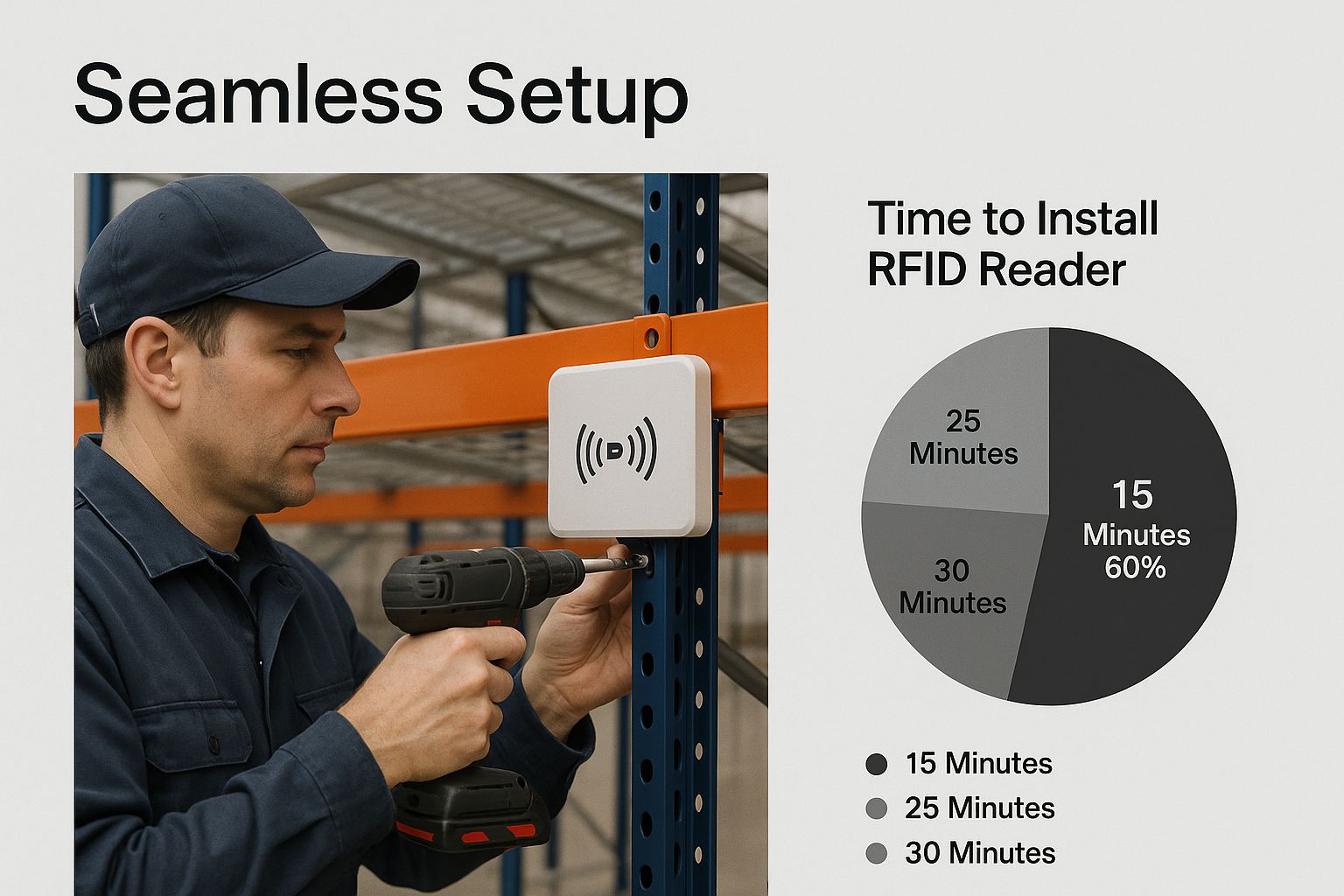
As you can see, the setup for modern tracking systems is designed to be straightforward, making the switch feel a lot less overwhelming for businesses of any size.
Drive More Sales and Revenue
The most immediate way live data boosts growth is by preventing lost sales. How often do your best-selling items go out of stock? Those are silent revenue killers. With real-time tracking, you get automated alerts when popular products are running low, giving you plenty of time to reorder before a customer ever sees that dreaded "out of stock" message.
This confidence in your stock levels also opens up new ways to sell. You can finally offer services like "Buy Online, Pick Up In-Store" (BOPIS) without the nagging fear that the item won't actually be there when the customer shows up. That kind of reliability creates a smooth experience that encourages people to spend more.
Slash Operational Costs
Beyond making more money, real-time data is a master at cutting unnecessary costs. Overstocking is a huge financial drain, tying up cash in products that are just sitting on a shelf collecting dust. Live data helps you pinpoint these slow-moving items and adjust your purchasing to keep your inventory lean and efficient.
This precision creates a positive ripple effect across your entire operation:
Reduced Spoilage: If you sell perishable goods, knowing exact inventory counts and expiration dates is a game-changer. It minimizes waste and protects your profits.
Optimized Staffing: When your team isn't wasting hours on manual counts or searching for misplaced products, they can focus on what matters—like helping customers and driving sales.
Lower Carrying Costs: Less extra inventory means you spend less on storage, insurance, and security. It’s that simple.
The difference this accuracy makes is staggering. One study of local businesses found that switching from traditional methods with 76% accuracy to a real-time system shot their accuracy up to an incredible 98.7%. For one hardware store, this shift alone wiped out $5,000 in monthly losses from stockouts. The efficiency gains were just as impressive, with order processing times plummeting from 2.5 hours to just 18 minutes.
Let's look at a side-by-side comparison to really see the difference.
Manual vs Real Time Inventory Tracking a Comparison
This table breaks down how traditional inventory methods stack up against real-time systems across key business metrics. The contrast highlights the clear advantages of adopting live data.
As the numbers show, moving to a real-time system isn't just a minor improvement; it's a fundamental shift in how your business operates, delivering better results at every turn.
By transforming your inventory data from a historical record into a live dashboard, you empower every part of your business to operate more efficiently and make smarter financial decisions.
Enhance Customer Loyalty
At the end of the day, sustainable growth is built on a foundation of loyal customers. Real time inventory tracking is crucial for building the trust that creates that loyalty. When a customer places an order, they expect you to deliver on your promise.
Accurate stock data ensures you can give them reliable delivery estimates and avoid the frustrating experience of having to cancel an order after it’s been placed. This reliability is the bedrock of a positive customer experience. To really make this work, it's essential to have a clear view of your entire supply chain, a concept explored in this guide to Mastering Supply Chain Visibility for Your Business.
By ensuring a smooth and predictable fulfillment process, you not only meet expectations but exceed them, turning one-time buyers into repeat customers who truly trust your brand. You can bring this data to life by checking out these powerful business intelligence dashboard examples for 2025.
The Technology Behind Modern Inventory Systems
If you peek behind the curtain of a real-time inventory tracking system, you won't find some impossibly complex machine. What you'll find is a smart, coordinated team of hardware and software. Think of these tools as the eyes, ears, and brain of your entire operation, working together to create a seamless flow of information from the warehouse shelf right to your screen.
The whole system is built on a simple idea: capture data every time something happens. A product arrives, it moves to a different shelf, it gets sold, it gets returned—the technology records it instantly. This constant conversation between your physical stock and your digital records is what finally puts an end to guesswork and costly manual errors.
The Hardware: Your Boots on the Ground
The hardware is what your team actually holds and uses to interact with your inventory. These are the physical tools gathering data from the real world. While the specific gadgets can vary, they usually fall into a few main categories.
Barcode Scanners: These are the workhorses of the inventory world. A quick scan of a barcode can instantly tell the system what an item is, where it's going, or that it's just been sold. They are the classic, reliable way to track products from the receiving dock to the checkout counter.
RFID (Radio-Frequency Identification): This is a huge step up from traditional barcodes. Instead of scanning items one by one, an RFID reader can scan hundreds of tagged products at once without even needing a direct line of sight. A cycle count that used to take all day can now be done in minutes.
IoT Sensors: For businesses with specific needs, Internet of Things (IoT) devices are a game-changer. These sensors can monitor things like temperature and humidity, which is absolutely critical for perishable goods or sensitive electronics. They provide a constant stream of data to ensure product quality never dips.
It's no surprise that more and more businesses are adopting this tech. The global market for IoT and real-time inventory tracking was valued at USD 3.7 billion and is projected to skyrocket to USD 6.9 billion by 2035. That kind of growth shows just how much demand there is for the accuracy these tools deliver. You can dig deeper into these market trends in this comprehensive statistical report.
The Software: The Brains of the Operation
If hardware tools are the senses, the software is the central nervous system. It takes all the raw data flooding in from scanners and sensors and translates it into organized, useful information that helps you make much smarter business decisions.
At the heart of it all is your Inventory Management System (IMS). This software becomes the single source of truth for your entire operation, pulling together data from every channel so your sales team, warehouse crew, and leadership are all on the same page, looking at the same live numbers.
But a modern IMS doesn't work alone. Its real strength comes from connecting with the other tools you rely on every day, creating a unified system where information flows exactly where it needs to go.
Key Software Connections
This web of connections is what makes the whole thing work so beautifully. When a customer buys a shirt from your website, the IMS immediately updates the stock level across the board. That prevents an employee in your physical store from selling that very same shirt to someone else. It's this seamless communication, all powered by the right technology, that builds the foundation of a truly modern and efficient business.
Your Practical Guide to a Smooth Implementation
Making the leap to a real-time inventory tracking system can feel like a massive undertaking, but it doesn't have to be. With a solid plan, it’s a manageable project that pays off in a big way. The key is to see it not as a chaotic overhaul, but as a series of deliberate steps to build a stronger foundation for your business.
This guide lays out a simple roadmap to follow. By taking it one step at a time, you can navigate the transition with confidence and set your business up for success right from the start.
Step 1: Audit Your Current Processes
Before you can fix anything, you have to know exactly what’s broken. This first step is all about getting brutally honest with your current inventory management. You need to pinpoint the specific headaches and inefficiencies that are draining your time and money. Don't just guess—get in there, gather real data, and talk to the people who handle your inventory every day.
The goal here is to create a clear "before" picture. Document everything, focusing on a few critical metrics:
Time Sinks: How many hours is your team really spending on manual counts each week or month?
Accuracy Gaps: What’s your current inventory accuracy rate? How often does what's in your system not match what's actually on the shelf?
Fulfillment Failures: How many orders are you delaying or canceling because an item you thought was in stock is nowhere to be found?
This data is gold. It not only defines what you need from a new system but also gives you a concrete baseline to measure your return on investment down the road.
Step 2: Define Your Must-Have Features and Budget
Okay, you know the problems. Now, what do you need to solve them? This is where you create a prioritized list of features. Forget the shiny objects for a moment; this is about the absolute essentials your new system must have to fix your biggest issues.
For example, if constant stockouts are killing your sales, automated low-stock alerts and demand forecasting tools are non-negotiable. If you’re juggling inventory across multiple warehouses, then you obviously need a system built for multi-location management. Once you have your "must-haves" and "nice-to-haves" sorted, you can set a realistic budget that lines up with those priorities.
Think of this as creating a blueprint for your solution. A clear plan keeps you from overspending on features you'll never use or, even worse, picking a system that fails to solve your core challenges.
Step 3: Vet Vendors and Migrate Your Data
With your feature list and budget in hand, you’re ready to start shopping. Now you can approach software vendors with specific, targeted questions. Ask about how their system integrates with the tools you already use (like your point-of-sale or e-commerce platform), what their customer support is like, and how they handle training.
After you've picked the right partner, the real work begins: data migration. This is the process of moving all your product info—SKUs, descriptions, supplier details, and current stock levels—into the new system. A clean, accurate data import is absolutely critical for a successful launch, so work hand-in-hand with your vendor to get it right.
Step 4: Train Your Team and Launch
The best technology in the world is useless if your team doesn't know how to use it. A smooth rollout is all about good training and clear communication. Your staff needs to understand not just how to operate the new tools, like a barcode scanner or the software dashboard, but also why you’re making this change.
Show them how the system will make their jobs less frustrating by getting rid of tedious manual counts and preventing common errors. Write up new standard operating procedures that map out the updated workflows for receiving stock, picking orders, and shipping them out. When your team feels confident and understands the benefits, you’re ready to go live and finally start enjoying true real-time inventory tracking.
Making Your System Work for You: How to Get a Real ROI
Flipping the switch on a new real time inventory tracking system feels great, but that's just the starting line. The real win—and a serious return on your investment—comes from using it to make smarter, faster decisions that actually grow your business. This is where you move from just tracking stuff to truly mastering the data your system gives you.
Think of it this way: installing the software is like buying a high-performance car. The real magic happens when you learn how to drive it well. You start using that live data stream to see what's coming, put routine tasks on autopilot, and keep everything ridiculously accurate.
Go Beyond Tracking with Demand Forecasting
Your new system isn't just a ledger; it's a crystal ball powered by sales data. Instead of simply watching stock levels rise and fall, you can now dig into historical trends and market shifts with incredible clarity. This is what lets you predict future demand with an accuracy that just wasn't possible before.
Imagine knowing, with a high degree of confidence, that a certain product is about to take off next quarter. You can get ahead of the curve, adjust your ordering, and have the perfect amount of stock ready to go. This proactive approach means you’re capturing every single sale without sinking cash into inventory that just sits there gathering dust.
A real-time system turns your inventory data from a backward-looking report into a forward-looking playbook. You stop reacting to customer demand and start anticipating it.
Honestly, this kind of insight is a massive competitive advantage. While your competitors are still making educated guesses, you're making decisions based on hard data, which directly improves your cash flow and profitability. It completely changes the game.
Automate Reordering and Make Stockouts a Thing of the Past
One of the most powerful things a modern inventory system can do is take routine decisions off your plate. Manually checking stock and cutting purchase orders is a huge time sink and, let's be honest, it's easy to make a mistake. By setting up automated reorder points, you can pretty much eliminate stockouts for good.
It’s a simple but brilliant process:
Set Your Threshold: For each item, you decide on a minimum stock level—the "reorder point." This is the lowest you’re comfortable letting your inventory dip before you need more.
Let the System Watch: The system keeps an eye on your live inventory counts 24/7. As soon as an item hits that minimum threshold, it can automatically generate a purchase order or ping your purchasing manager.
Stay Perfectly Stocked: This simple automation keeps your best-sellers flowing in without anyone having to constantly check the numbers. It frees up your team to focus on bigger things while the system handles the daily grind of replenishment.
Maintain Pinpoint Accuracy with Cycle Counting
Even the smartest systems need a reality check now and then to stay sharp. But forget about the dreaded annual stock-take that shuts down your whole operation for a day or two. There's a much better way: cycle counting. This just means counting small, manageable sections of your inventory on a regular schedule—maybe daily or weekly.
This approach is a game-changer. It’s far less disruptive, helps you spot and fix small errors before they become big problems, and keeps your inventory data accurate all year round. By adopting these kinds of practices, you ensure your real time inventory tracking system pays for itself over and over again.
Your Top Questions About Real-Time Inventory Tracking, Answered
Jumping into a new system always brings up a few questions. That's a good thing—it means you're thinking strategically. Let's tackle some of the most common ones we hear from business owners who are thinking about making the switch to real-time inventory tracking.
What's the Real Cost of a System Like This?
The price tag can swing quite a bit, but it’s often more affordable than people assume. Your final cost really boils down to three main things:
The Software: Most modern platforms are cloud-based, so you're looking at a monthly or annual subscription. These are usually priced based on how many users you have or the number of warehouses you operate.
The Gear: This is your hardware—barcode scanners, RFID readers, maybe a few label printers. A small boutique might get everything they need for a few hundred dollars, whereas a sprawling warehouse will obviously have a much larger upfront hardware cost.
Getting Set Up: Some providers roll setup and training into their subscription fee, while others charge a one-time fee to get your system configured and your team trained up.
It's tempting to focus only on the cost, but the smart move is to see it as an investment. When you factor in the money you’ll save by eliminating stockouts, cutting down on overstock, and freeing up your team's time, the system often pays for itself surprisingly fast.
Will This Work With the Software I Already Use?
Yes, and that’s precisely where the magic happens. A modern inventory system isn't designed to be another siloed piece of software; it's meant to be the connective tissue for your entire operation.
The whole point of a modern inventory system isn't to rip and replace what you've already built. It's to plug everything together. This creates a single source of truth so your entire team is always working with the most current data.
This means your point-of-sale (POS) terminal, your e-commerce store (like Shopify or BigCommerce), and your accounting software all talk to each other in real time. An online sale instantly updates the stock levels your in-store staff sees, which kills the risk of accidentally selling the same item twice.
How Long Will It Take to Get This Up and Running?
The timeline can be anywhere from a couple of days to a few weeks. The biggest factors are the size of your operation and how organized your data is right now.
If you’re running a single retail shop and your product catalog is already in good shape, you could be up and running very quickly.
On the other hand, if you have multiple warehouses and thousands of SKUs, the process of migrating all that data and setting up the hardware will naturally take more time. Any good partner will give you a clear, realistic timeline and work with you to make the switch feel seamless. The key is having a solid plan and a team that’s ready to embrace a better way of working.
Ready to stop guessing and start knowing? Flow Genius specializes in designing and implementing smart automation solutions that give you perfect visibility into your business. We connect your tools, streamline your workflows, and build the real-time systems you need to drive growth and eliminate costly errors.

